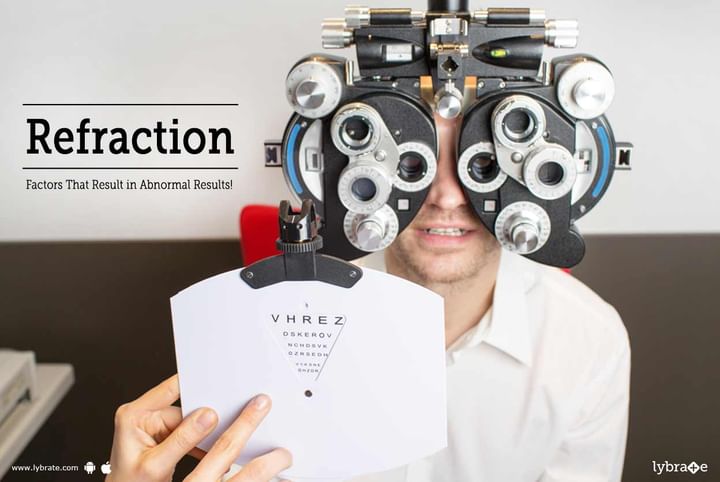Refraction - Factors That Result in Abnormal Results!
Refraction is a test for eye examination, which measures prescription for eyeglasses or contact lenses for individuals. The test can be performed by either an ophthalmologist or optometrist or in layman terms, an eye doctor.
Procedure for the test
In this test, the individual sits on a chair, which has a special device attached to it, called the refractor or phoropter. The individual has to look through the device and properly focus on an eye chart which is exactly 6 meters or 20 feet away. This device has lenses of various strengths that can be moved into the individual’s view. The test is conducted on one eye at a time. The doctor will be asking the individual about the chart whether it appears clearer or less clear, thereby determining the refractory error of the eye.
No special preparation is required for this test and also this test does not cause any discomfort. The purpose of the test is to determine whether the individual has a need for glasses or contacts or not. In other words, it checks if the individual has a refractory error or not.
How can the results be inferred?
If the vision without glasses is normal, it means that the refractive index is zero and the vision should be 20/20. This means that one can read a one-centimeter letter at a distance of six meters.
If an individual has a refractive error, a combination of lenses will be required for a 20/20 vision. In case of a refractive error, there would be a prescription and that would have in it a series of numbers describing the power of the lens required to correct the vision.
Abnormal results can be due to the following reasons
- Myopia or near-sightedness (capability to see near objects clearly, but having difficulty in seeing objects far away)
- Hypermetropia or far-sightedness (capability to see far away objects clearly, but not the nearby objects)
- Astigmatism (blurred vision due to abnormally curved cornea)
- Presbyopia (inability to see nearby objects clearly, which usually occurs due to age)
Other reasons that cause abnormal results can be
- Macular degeneration causing loss of sharp vision
- Corneal infections or corneal ulcers
- Retinal detachment, which means separation of the retina from its supporting layers
- Retinitis pigmentosa or damage of the retina
- Blockage of a small artery carrying blood to the retina or retinal vessel occlusion
One should have an eye examination conducted every three to five years even if they suffer from no serious eye problem. However, after the age of 40, one should schedule eye appointments every year and have a test for refraction error of glaucoma conducted.
In case you have a concern or query you can always consult an expert & get answers to your questions!



+1.svg)
